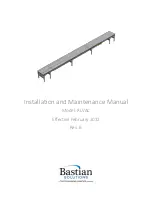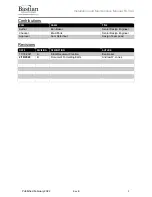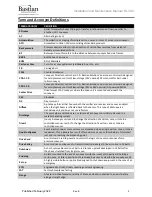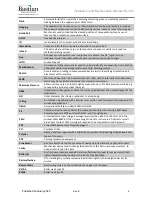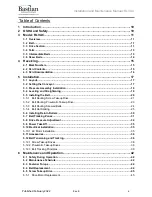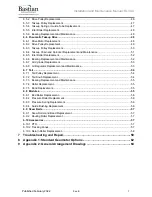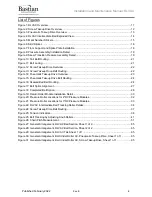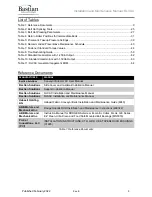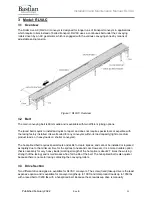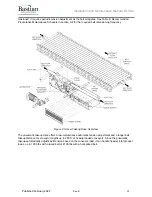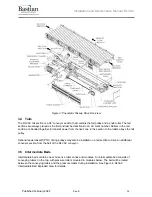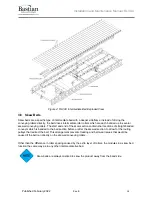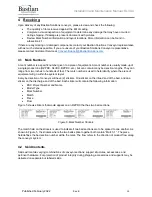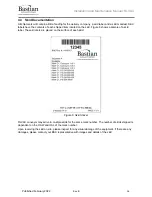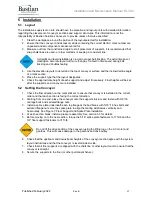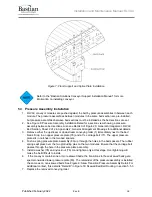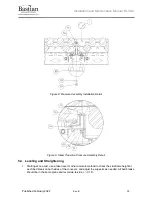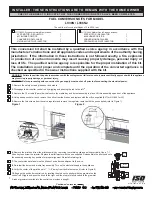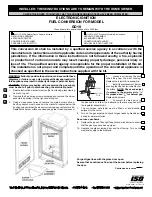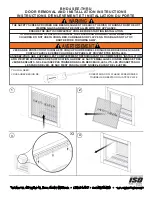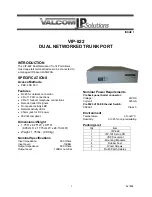
Installation and Maintenance Manual: RLVAC
Published February 2022
5
Roller
Powered or unpowered cylindrically-shaped material handling component used for
mechanical power transmission, a conveying surface, and/or support for a belted
conveying surface.
Shingling
Event in which surfaces of adjacent cartons, cases, or totes are forced to lift off the
conveyor due to elevated uneven carton, case, or tote back pressure.
Side Frame
Structural member used to support rotating components needed for conveyor beds.
Singulation
The active separation of cartons, cases, or totes.
Skatewheel
Small unpowered wheels used to replicate nearly frictionless guidance or support of
conveyable cartons, cases, or totes.
Skew
A format of conveyor where one end of all rollers are shifted to provide an angled
conveying surface for left or right justification of cartons, cases, or totes.
SKU
Stock Keeping Unit; Product and service identification code for a product (i.e. bar
code).
Slug Release
See
Train Release
.
Snub Roller
A roller or pulley mounted to increase the arc of contact between a belt and drive
pulley. Additionally, this can be used to change the direction of the return belt travel.
Splice Assembly
A five-component assembly-consisting of a plate (or formed plate), two bolts, and two
nuts-that is used to secure a piece of guide rail to an adjacent piece of guide rail, or a
side frame to an adjacent side frame. This is used to provide additional structural
rigidity and ensure relative position of components is maintained.
Spur
A format of DC conveyor used to create linear transitions into intersecting lines of
conveyor positioned at a non-perpendicular angle. Typically includes 30deg and 22deg
configurations.
Tail Pulley
A non-driven pulley located at the tail end of the conveyor.
Takeup Pulley
Pulley with an adjustable position used to eliminate unnecessary slack in a belt.
Takeup Screws
Adjustment screw used to adjust the position of a takeup pulley.
TOR
Top of roller; this refers to the elevation of the conveying surface with respect to the
floor on which the conveyor is sitting.
Track
To adjust the position of conveyor components in such a way that engourages proper
belt alignment on a system.
Tracking Bands
Thin plastic bands installed on head or secondary drive roller to help keep DC format
conveyor belts tracked.
Train Release
The release or activation of all zones in a line of accumulating conveyor at the same
time.
UHMW
Ultra-high molecular weight polyethylene plastic, used to reduce friction and wear.
Waterfall
Method of overlapping guide rail such that cartons, cases, or totes cannot catch on
downstream guide rail.
Wiz Nut
A serrated flange nut used to cut into the surface of the component it is tightened
against.
Zero Pressure
Condition where adjacent cartons, cases, or totes are not in contact with one another.
Zone
A section of conveyor that can be independently controlled for the purposes of zero
pressure accumulation.
ZPA
Zero Pressure Accumulation; a method of collecting, staging, and/or transporting
multiple cartons, cases, or totes on zoned conveyor without the products touching
each other.

